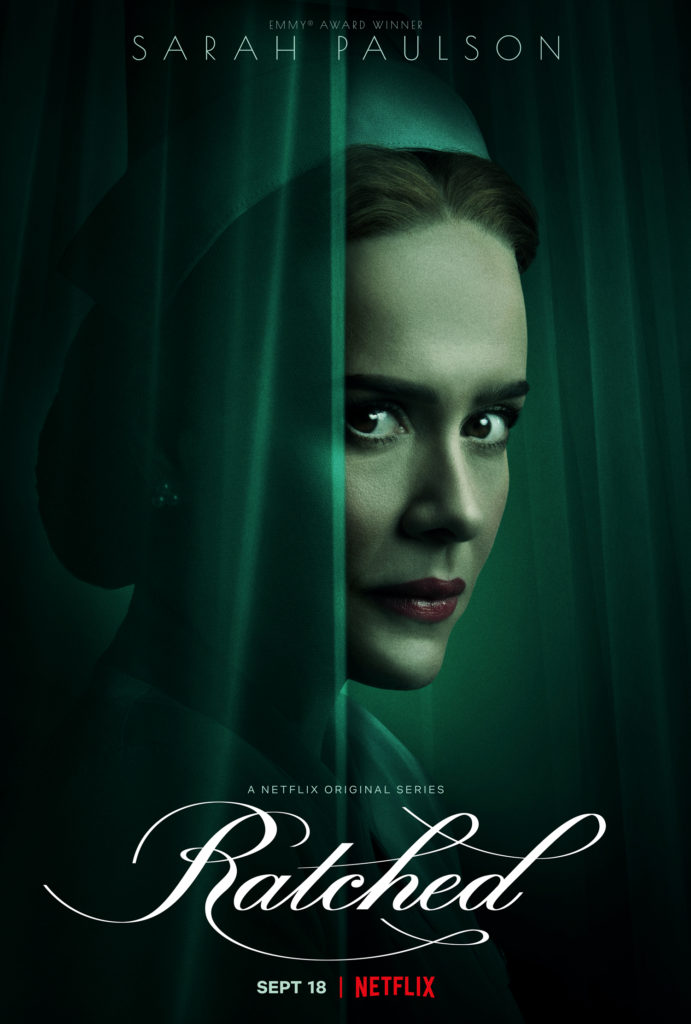“Ratched”–Ratcheting Up the Tension

This Netflix quasi-horror thriller creates a backstory for Nurse Ratched, the heartless villain in the 1975 Academy-Award winning classic “One Flew Over The Cuckoo’s Nest”. “What made Ratched so vile and so unimaginably cruel and unempathetic?” The answer, of course, has roots in Nurse Ratched’s tragic early years, unhealed wounds that continue to fester. Ratched is a female-villain origin story.
Ratched opens in 1947 as Mildred Ratched arrives in Big Sur to seek employment at a leading psychiatric hospital. New experiments, believed to be cutting-edge, have begun on the mostly affluent patients committed to their care. But there is a brutal darkness within the hospital’s walls, literally cutting-edge, as lobotomies and other heinous surgical operations become almost daily routine. In eight episodes set in Hitchcock-style scenes, the diabolical scheming regurgitates similar carnage to “American Horror Story”(by the same producer, Ryan Murphy).
In Ratched Sarah Paulson (also starring in “American Horror Story”) plays the conniving, pathologically manipulative title character. She performs with such intensity that the viewer wants to turn away from watching how she entertains herself by creating chaos at others’ expense. As a predator master-planning each killing blow, Ratched’s targets all know she is coming for them but none are her match.
The first four episodes are spellbinding, with an occasional act of kindness from Ratched to prevent a one-dimensional villain and sadist. Ratched becomes understandable–if not relatable. A subplot in which she has a tenuous relationship with Gwendolyn Briggs (the always wonderful Cynthia Nixon) has some of the best dialogue in the series.
Nurse Ratched becomes a metaphor for the corrupting influence of institutional power and authority. And in Ratched, almost everyone is amoral. Mildred’s co-worker and adversary, Nurse Betsy Bucket (the terrific Judy Davis), has the same ice-cold authoritarian blood. And Edmund, Mildred’s brother (Finn Wittrock), is both the embodiment of evil and a hopelessly wounded victim.
The second half of the mini-series stands in stark contrast to the first. In Episode 5 the story goes into a dizzying spiral downward in both plot and structure. Charlotte Wells (the astonishing actor Sophie Okonedo) is a patient being treated for severe multiple personality disorder. Why she is introduced and so poorly interwoven with the other characters is puzzling. Okonedo, in a role not worthy of her in spite of sensational acting, unravels the first half of what otherwise would have been an extraordinarily riveting narrative. The first four episodes could stand alone as a far more integrated whole.
Conclusion: Watch for a very exciting story for the first half. Stop if you don’t have time or the inclination to finish what is a very disappointing downhill narrative .

Lenore Gay
Hey,
I’ll pass on this one. Seen enough of this type of evil witches and trauma.
L.